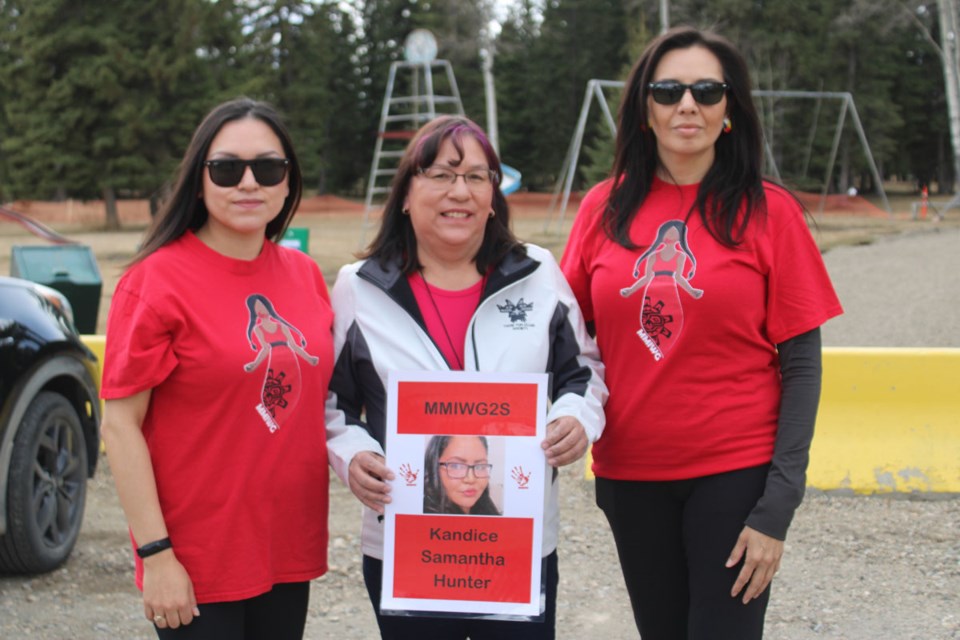The Treaty 8 Tribal Association invited the public to gather and honour the National Day of Awareness for Murdered and Missing Indigenous Women and Girls Thursday afternoon.
The day is observed every May 5,and Connie Greyeyes, a well-known advocate for social justice and the manager for the Indian Residential School Survivors Society, says it’s more than just a day to wear red or walk in people’s memory.
“Today is all about honouring the lives of the many women who have gone missing or have been murdered in this community, many of them were my friends,” she said. “And so it’s always important to make sure that we acknowledge that. For me, it’s much more than having a walk, or putting on a red dress or a shirt, it’s much deeper than that, and it has to be.”
Greyeyes attended Jody Wilson-Raybould’s keynote speech at the North Central Government Association’s 2022 convention and agreed that it’s time to go beyond symbols and performative reconciliation.
“It’s about making a real concerted effort to change your thoughts and views on indigenous people in Canada and trying to understand the intergenerational trauma that we’ve all experienced through residential schools, day schools, from time immemorial, from first contact," Greyeyes said. "All of these factors play into why we are so much more at risk."
Greyeyes says everyone should be mindful of the impacts from resource industries in Northeast B.C., and how that can affect vulnerable populations. Indigenous women are five times more likely to go missing compared to their peers, she says.
“When industry comes to town, everything gets driven up, which causes people that are already marginalized to be further marginalized. They can’t afford things, so they do things that may put them at risk,” she said. “Walking home from a midnight job and having to walk home in the middle of the night.”
“It’s important to have those conversations so that people understand that there’s many, many factors that contribute to this crisis of our women and girls being more at risk.”
Tom Summer, Alaska Highway News, Local Journalism Initiative.
Got a story or opinion? Email tsummer@ahnfsj.ca



